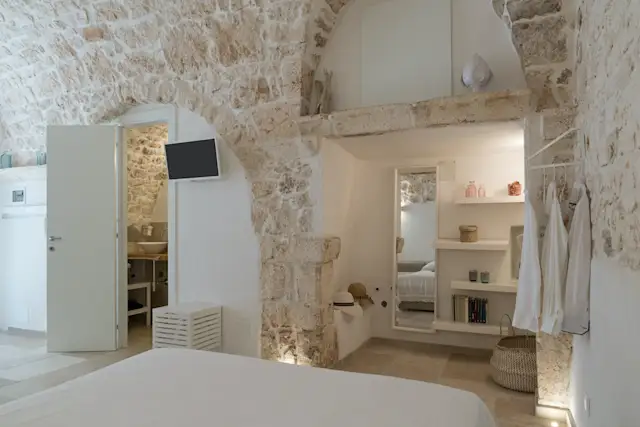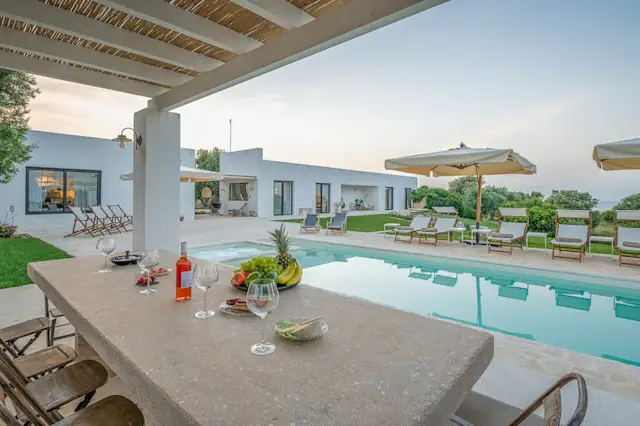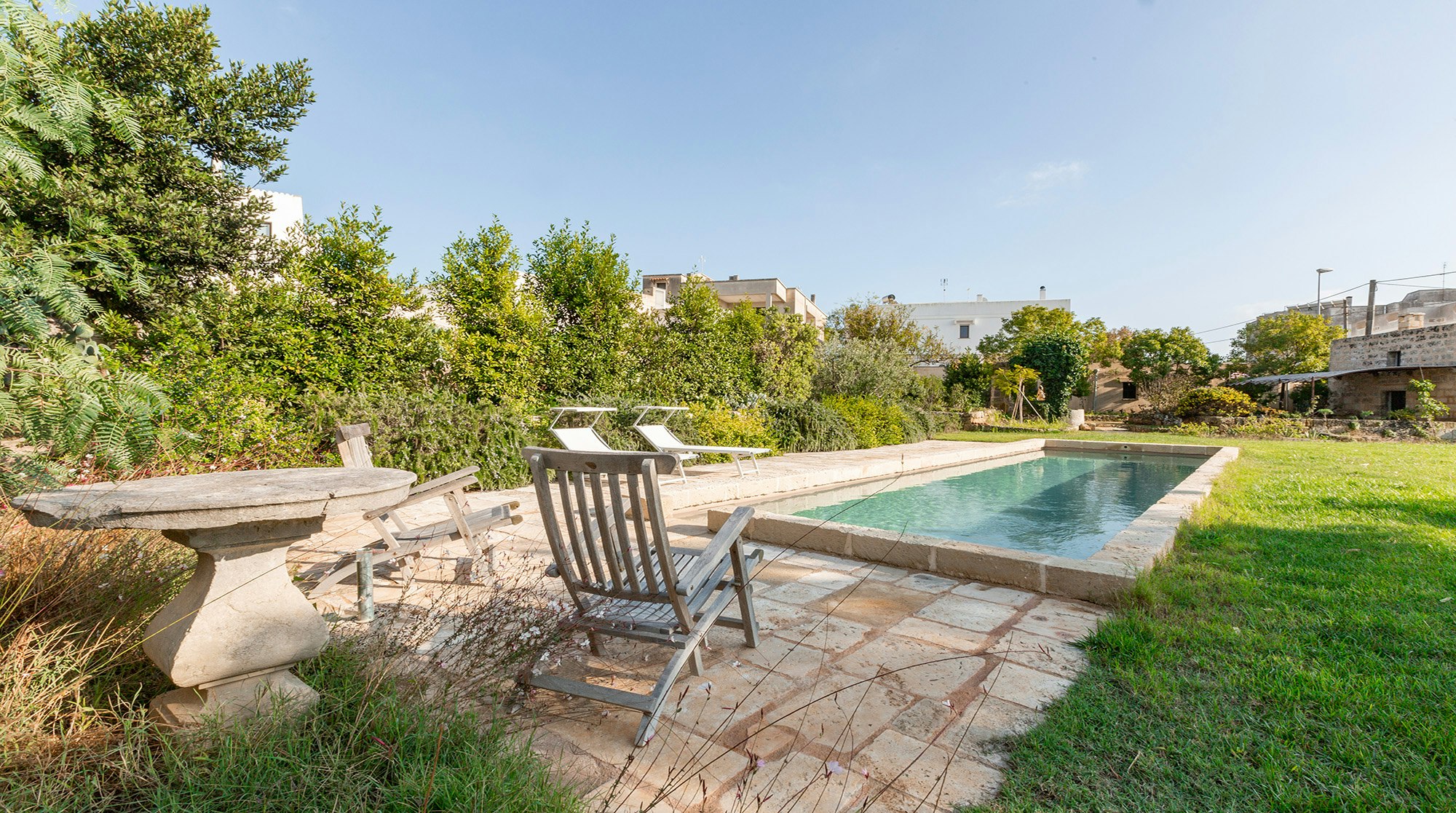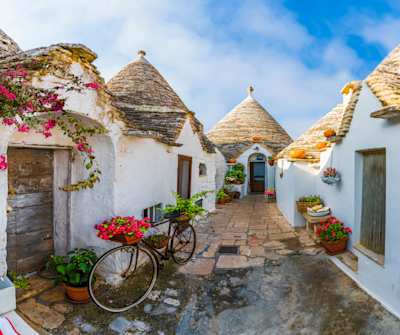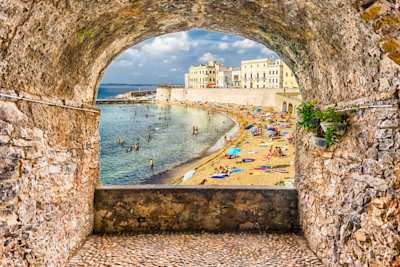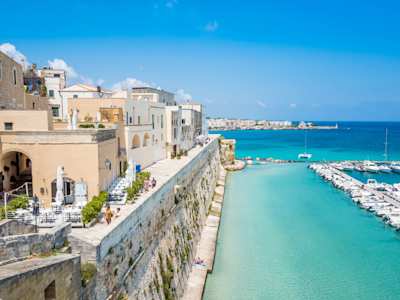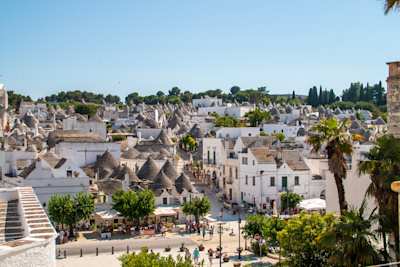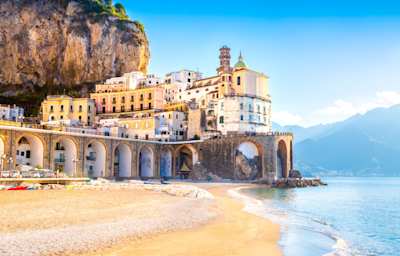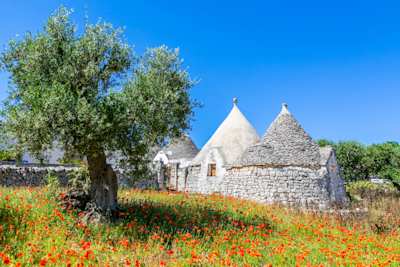The Essential Travel Guide For Puglia
The heel of Italy’s boot is a land of contrast and surprises around every corner
~
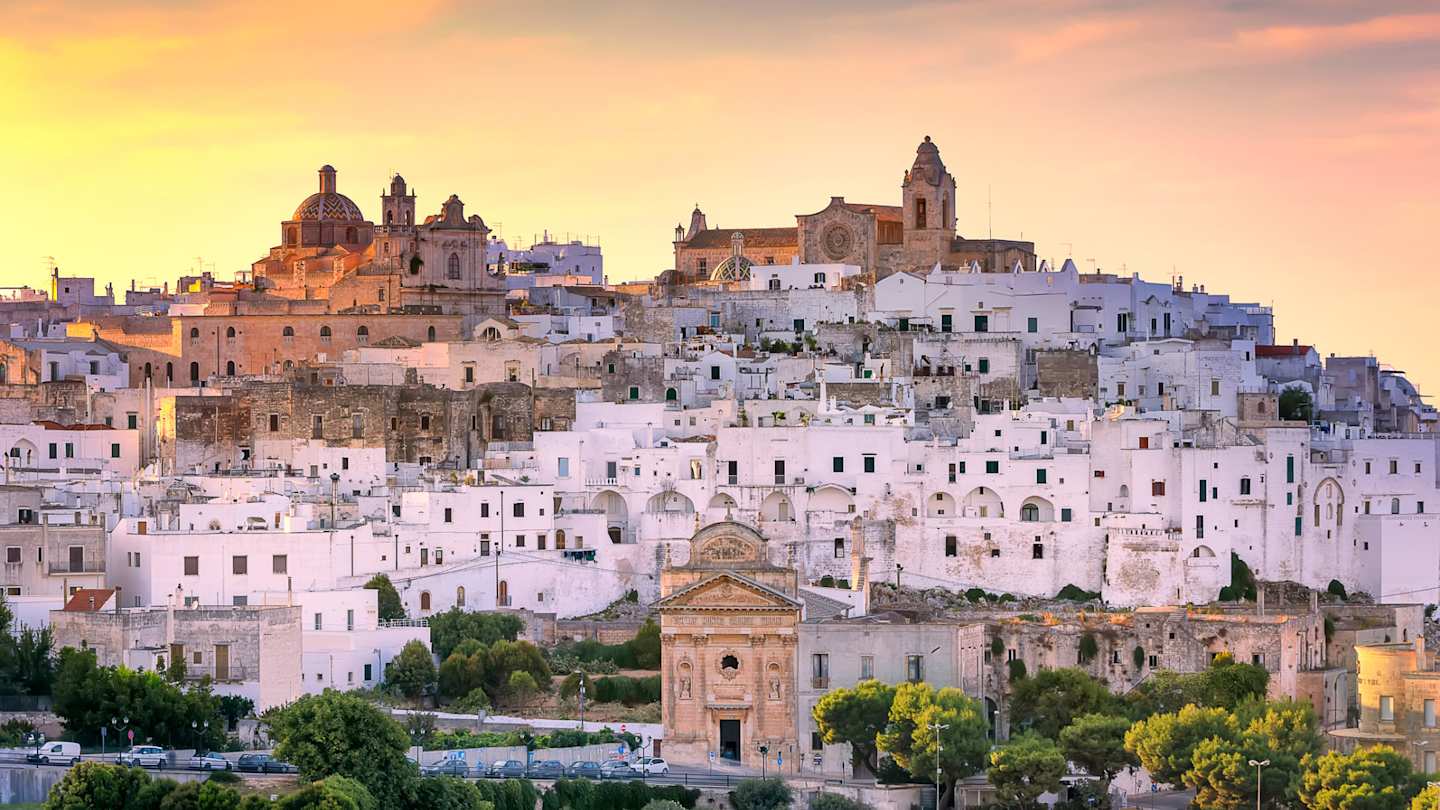
With its Mediterranean climate, verdant landscapes, sun-baked beaches and cultural and historical sights, Puglia is one of Italy’s most attractive regions. It also happens to be just the right place to pamper your taste buds—what more could you want on vacation? As the result of some thorough research (involving lots of wine and pasta), the experts at Plum Guide have collated this comprehensive travel guide to Puglia. Read on to find all you need to know about travelling to the region.
General info about Puglia
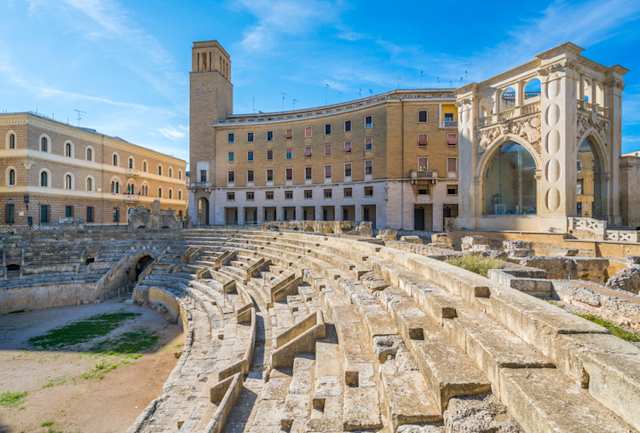
Roman Amphitheatre in Lecce, Apulia
Puglia’s strategic location and fertile soil have long attracted people to the area since the Paleolithic Age. Over millennia, Puglia has seen the Messapians, Greeks, Romans, Normans, Byzantines, French, and Spanish take over. It’s no surprise, then, that Puglia has such a rich history while developing its own unique culture.
Best time to visit Puglia
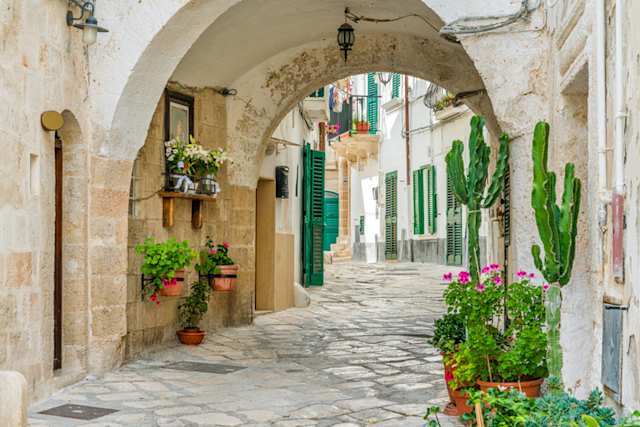
Street in Monopoli, Apulia, Italy
Thanks to its Mediterranean climate, Puglia is a lovely year-round destination. Having said that, the peak summer months of July and August can get very hot, with temperatures reaching the mid 30°Cs. This is when Puglia is at its busiest too, so if you want to avoid the crowds, spring, early summer, and autumn are ideal. Temperatures remain mild and are pleasant for walking and cycling. Rain is quite rare in this part of Italy, so it also makes a great winter destination.
How to get to Puglia
Puglia is very easy to get to, and there are several ways to get around once you’re here. The region is covered by the national railway service, Trenitalia, so this is an excellent way to travel between larger cities. Smaller towns have a bus service and are very reasonably priced. Puglia also has two main airports, Bari and Brindisi, which regularly run international flights. These cities also have ports connecting to cities in Albania, Montenegro, Greece and Turkey.
Top activities and attractions
Beaches
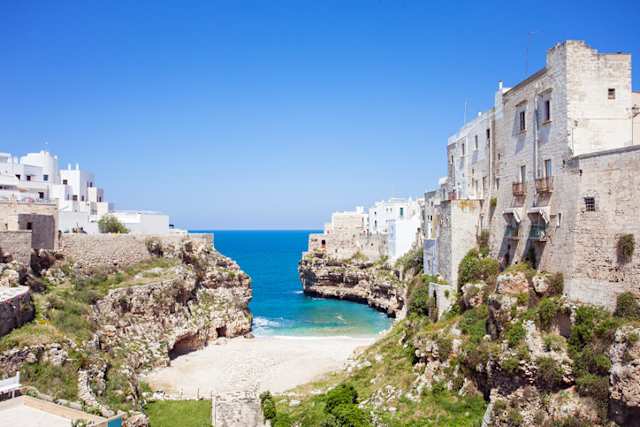
Beach in the town of Polignano a Mare, Apulia, Italy
If you want to base your entire holiday around lying on the beach, there’s no better place than Puglia. The choices here are endless, from long stretches of white sands to tiny hidden coves and natural swimming pools. Baia dei Turchi is one of Puglia’s top beaches, with warm waters backed by quiet pinewood forests. Elsewhere you have Punta Prosciutto, where impossibly blue waters meet soft white sands and dunes—this is also an excellent spot for sailing and windsurfing. For something a little different, jump four metres into the turquoise waters of Grotta della Poesia, a natural sinkhole near the town of Roca.
Island hopping
Part of the Gargano National Park, the Tremiti Islands are a stunning archipelago made up of the five small islands of San Nicola and San Domino and the uninhabited Capraia Cretaccio and Pianosa. The best way to explore is to sail around the islands, snorkelling and scuba diving as you go, stopping at stunning caves like Grotta delle Viole and Grotta del Bue Marino. On San Nicola and San Domino, take in the impressive architecture and enjoy the catch of the day at the many seafood restaurants.
Seeing the trulli
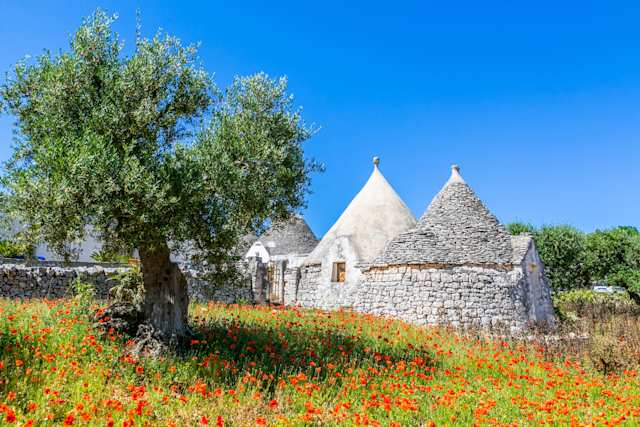
Trulli houses in Apulia
Excuse the pun, but we trulli couldn’t miss this off our travel guide to Puglia. The UNESCO World Heritage Site of Alberobello is famous for its large concentration of trulli, traditional dry stone huts with conical roofs specific to this area of Puglia. Dating back to the 16th century, these huts were designed to be easily dismantled to avoid property tax should a royal inspection occur. Bring your camera, as these whitewashed huts and cobblestone paths are straight out of a children’s picture book.
Agrotourism
As Italy’s top regional producer of olive oil and home to hundreds of vineyards, what better place to get involved in agrotourism? There are countless olive oil farms to visit, many of which have been around for centuries. Stroll through the ancient olive groves, see how the oil-making process works, and sample the delicious golden liquid. Move on to Puglia’s vineyards and wineries—some of our favourites include the historic Terra Jovia, which produces a Primitivo and Primitivo Riserva, Amastuola for its organic range, and Polvanera which does everything from whites and rose to reds and sweet wines.
Natural wonders
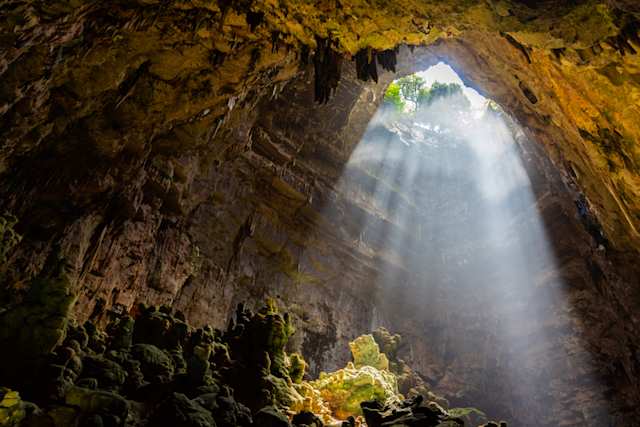
The Castellana Caves in Bari, Apulia
One of Puglia’s finest landscapes lies deep underneath the surface. The Castellana Caves are a karstic cave system dating back 90 million years, made up of large canyons and caves filled with fascinating rock formations—take a guided tour to depths of 70 metres to discover scenes straight out of a fantasy novel. Back on the surface, the vast Gargano National Park offers the opportunity to hike its rugged, mountainous interior, cycle through its Aleppo pine forests or relax on sandy beaches. Photogenic towns like Monte Sant’Angelo and Peschici make for the perfect pit stop on a drive through the park.
Hidden gems
A Plum travel guide to Puglia wouldn’t be complete without some hidden gems to escape the tourist crowds. Santa Cesarea Terme is a beautiful spa town built on a steep cliffside. Its hot mineral springs are rich in nutrients, making it a haven for spas—spend the day getting pampered with mineral baths and mud treatments. To soak up Puglia’s wonderful outdoors, head to Torre Guaceto, a breathtaking coastal and marine nature reserve. Surrounded by sand dunes and Mediterranean scrub, the sandy beaches are a peaceful spot to sunbathe, with the crystalline waters teeming with marine life. If you’re keen on diving and snorkelling, the town of Casalabate offers a secret that not many people know about. Hiding just beneath the surface of its turquoise sea is a magnificent shipwreck sunk by the British Navy in 1941, a unique experience for your Puglia itinerary.
Best areas to visit and stay in
Bari
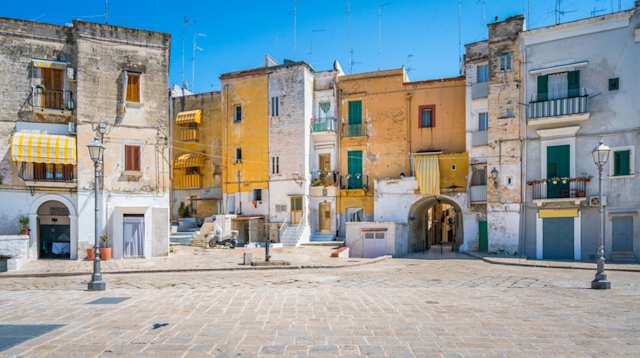
Citta Vecchia, the old town of Bari
Puglia’s capital city, Bari, is an excellent base for your Pugliese adventure. This is where old meets new, allowing you to step back in time in the Old Town of Citta Vecchia in the morning before transporting yourself back to the present day in the more modern Murat district during the afternoon. Wander through the maze of narrow alleyways, looking for splendid buildings like the 11th-century Basilica di San Nicola and the Cattedrale di San Sabino. The two main squares of Piazza del Ferrarese and Piazza Mercantile are ideal for a quick bite and drink before dancing the night away in the Murat district.
Otranto

The coastal city of Otranto with Aragonese castle, Apulia, Italy
The coastal town of Otranto is a fascinating place to visit, having been taken over by the Greeks, Romans, Byzantines, Normans and Ottomans. This rich history is reflected in the town’s architecture, and highlights include the 11th-century Romanesque cathedral with its elaborate floor mosaic and eerie skull collection, the 15th-century Aragonese castle and the 10th-century Church of San Pietro, which is embellished with magnificent Byzantine frescoes. Take a break from walking at one of the quaint cafes lining the ramparts, which offer beautiful coastline views.
Vieste
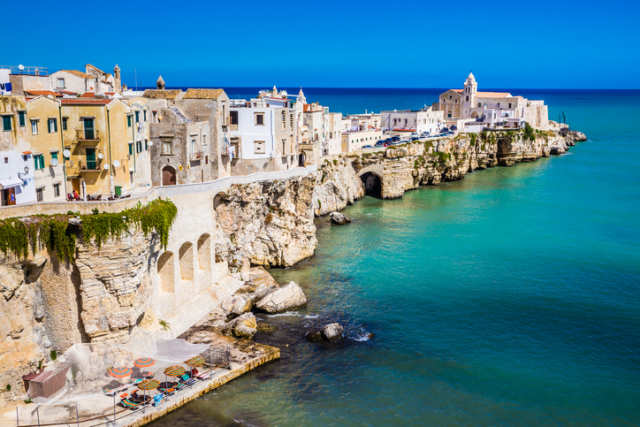
Old Town Of Vieste, Gargano Peninsula, Apulia
Situated in the Gargano National Park, it isn’t difficult to see why this coastal town is nicknamed the Pearl of the Gargano. It’s the ideal beach destination, with its coastline boasting picturesque coves, towering rock formations, hidden grottos and wide, sandy beaches. Built on a clifftop, the town is nothing to be sniffed at, with its panoramic sea views, elegant 11th-century cathedral and romantic Stairway of Love.
Ostuni
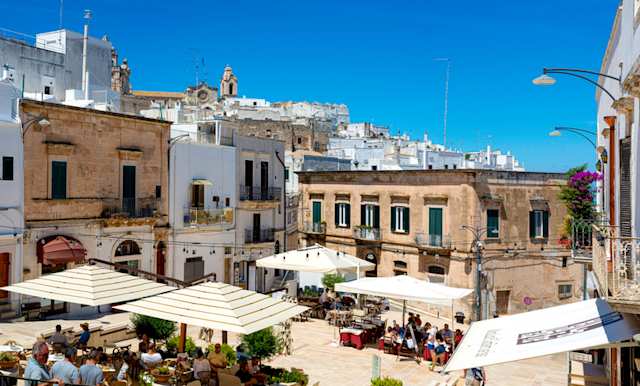
Ostuni square in Ostuni, Apulia
Perched on a hill overlooking the sea, Ostuni is a truly magical place. Nicknamed the White City for its whitewashed buildings that tumble down the hillside, the town’s 15th-century gothic cathedral is the finishing touch to the painting-like landscape. Lose yourself in the web of streets, stumbling across colourful shop fronts and charming cafes. Ostuni benefits from being centrally located, so if you’re looking for a base while you’re in Puglia, this is it.
Lecce
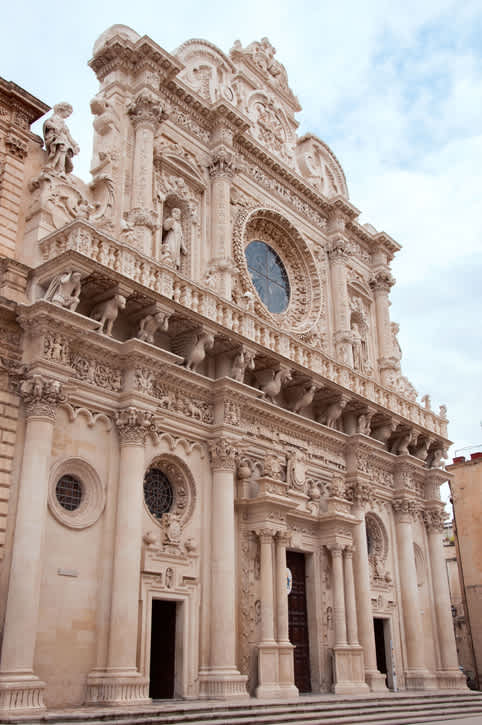
The Basilica di Santa Croce in Lecce, Apulia, Italy
With its striking baroque building collection, Lecce has earned its nickname, ‘The Florence of the South’. Like many towns in Italy, the best way to absorb everything is to make your way around on foot. Take in the details of the honey-hued churches and ornate palaces, keeping an eye out for the Basilica di Santa Croce with its gold accents and rose windows, as well as the Church of Saints Nicolò and Cataldo with its exquisite frescoes. Don’t miss the Piazza Duomo, where you can find three of Lecce’s most important religious structures—Lecce Cathedral, the Episcopal Palace and the Seminary Palace.
Eating out in Puglia
With all that exploring, you’re sure to work up an appetite. Each region in Italy is home to its own style of cuisine, and Puglia is no exception. Being a fertile region, dishes are typically prepared with locally sourced, seasonal ingredients, featuring plenty of olive oil, vegetables and a never-ending seafood supply.
Local delicacies
Discover local delicacies like orecchiette con cima di rape (‘little ears’ pasta served with broccoli rabe), panzerotti (deep-fried dough stuffed with tomato and mozzarella), baccala alla Salentina (Salento-style salt codfish baked with potatoes and tomatoes) and caciocavallo (a type of cheese and the perfect accompaniment to bruschetta). We’re strong believers that you should never skip dessert, so finish strong with pettole (sugar-dusted fried dough balls) and pasticciotti (shortcrust pastry tartlets filled with cream and sour cherry).
Where to find food
Although Puglia has a wide range of places to eat, you won’t find many sophisticated, fine dining establishments—it’s all about hearty, rustic meals here. A good place to start is one of the markets or street food stalls to get a feel for the cuisine. Most cities and towns will have a weekly market on different days of the week, so you could even travel around market-hopping. For more filling meals, head to a trattoria for simple home cooking, a masseria to try homemade dishes on a working farm, or a ristorante for a more upscale meal.

